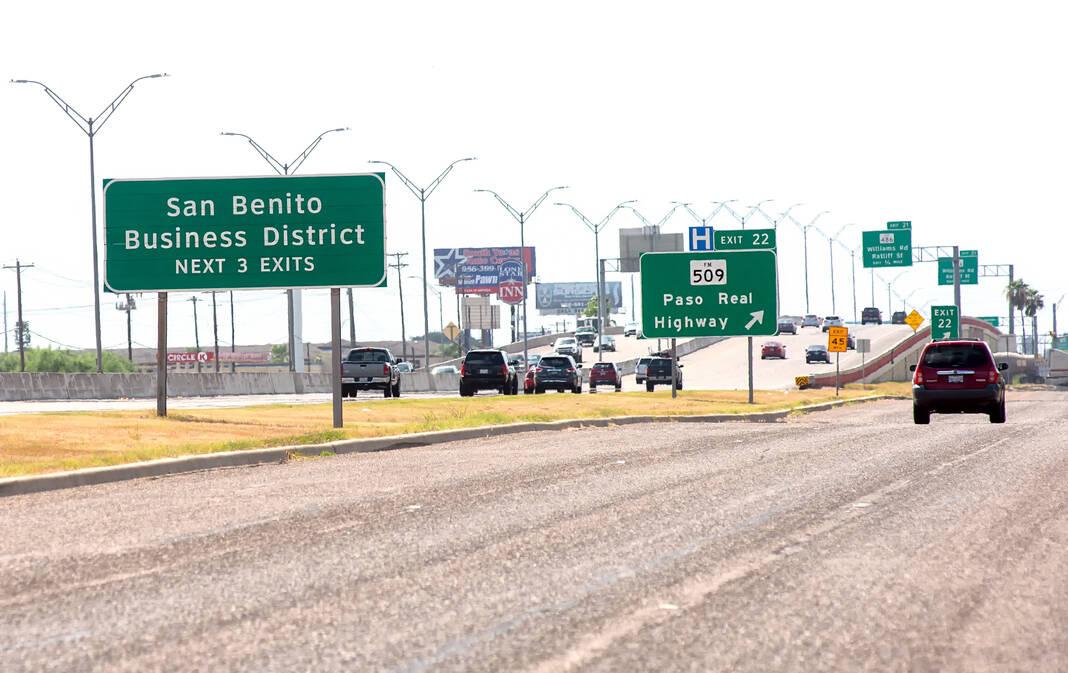SAN BENITO — After years of holding off, it looks like water rates are going up across town to pull the city’s utility system out of the red.
Within the city limits, households would get a two-year break before their rates start climbing in October 2024.
For businesses, higher rates would kick in in October.
Earlier this week, city commissioners passed the first reading of an ordinance calling for a 10-percent increase in household water rates spread out over a five-year period.
Meanwhile, commercial water rates would climb by 8.3 percent to as much as 9.8 percent each year over five years, based on water usage, the city’s new water rate study shows.
Proposal shifts burden to businesses
For four months, commissioners debated boosting rates based on consultant Jeff Snowden’s water rate study.
“He tried to make it as bearable for our water customers,” City Manager Manuel De La Rosa told commissioners during Tuesday’s meeting.
During their review, commissioners found households for years have been paying the bulk of some of the Rio Grande Valley’s highest water rates.
“We have a larger residential population than commercial and residential has been subsidizing a good portion of the commercial for a very long time,” De La Rosa said.
As part of his study, Snowden, with Frisco-based CAPEX Consulting Group, recommended shifting the burden to businesses.
“We tried to balance it,” De La Rosa said. “Everything is balanced and more uniform. Residential is not carrying the burden for commercial. For the small business owner, it’s all based on consumption. If you consume more, you pay more. You consume less, obviously it works the same, you pay less.”
Pulling utility system out of the red
For months, Commissioner Rene Garcia has been calling for a “self-sustaining” utility system.
“I like what I see and I feel comfortable now,” he said after commissioners passed the ordinance’s first reading. “I’ve always had in mind of creating a fair and equitable water rate system and I think this is going to pretty much get us back on track to where we need to be. We worked hard to come up with something that is fair and equitable to everybody — and reasonable.”
Paying off long-term debt
For years, previous city administrations held off on raising rates while the utility system’s annual deficits swelled to $2.8 million.
To offset annual shortfalls, officials have been dipping into the city’s general fund budget.
After years of delaying a rate hike, the utility system’s long-term debt has bulged to $19.39 million.
As part of their plan, commissioners are calling for the rate hike to help pay off long-term debt tied to the city’s new water plant.
Under their proposal, the rate hikes would cut the utility system’s debt to $5.1 million by 2028, Snowden’s study shows.
The debt stems from the construction of the city’s $17.7 million water plant opened in 2009, five years before a previous administration shut it down, arguing it never properly operated.
In late 2020, city officials reopened the water plant after using a lawsuit settlement to put it back into operation.
Residential, commercial rate increases
As part of the water rate study, Snowden recommended raising household rates by 10 percent, increasing rates 2 percent each year for five years, a plan which would boost average annual utility bills by $1.02 to as much as $1.54, based on water usage.
Meanwhile, he recommended officials raise commercial rates over a five-year period by 8.3 percent to as much as 9.8 percent each year, based on usage.
For businesses, the proposal would increase average annual utility bills by $12.34 to as much as $160.64, based on usage.
While businesses’ rates would start climbing October 1, the plan would hold off household increases until October 2024 to help residents cope with overall price hikes as the coronavirus pandemic’s production slowdown drives up demand.
Meanwhile, commissioners are planning to pull $3.8 million from the city’s $9 million share of the American Rescue Plan Act to cover the utility system’s annual shortfalls until residential rate hikes kick in in 2024.
Years of delays
It’s the second time Snowden’s recommended a water rate hike in about 12 years.
While Commissioner Pete Galvan believes the city’s last rate hike came in 2009, Guerra said a previous administration last boosted rates in 2014.
In 2010, a previous administration failed to carry out Snowden’s recommendation calling on officials to steadily raise rates during a five-year period through 2014, Galvan said in an earlier interview.
At the time, Snowden was recommending a rate hike that would boost customers’ utility bills by 1- to 3-percent to offset a $1.6 million shortfall in the utility department.
Background
From 2004 to 2009, the city steadily increased its water rates to help pay a $32 million debt stemming from projects including construction of the $17.7 million water plant, a $13 million sewer plant, a $1.6 million water tower and other water and sewer upgrades.
During that time, previous administrations took on the projects after decades of neglect had left the city with archaic water and sewer plants.
Now, the city’s base residential water rate stands at $20.59 for up to 2,000 gallons for homes with 5/8-inch meters while its sewer rate is $29.09 for up to 2,000 gallons.





